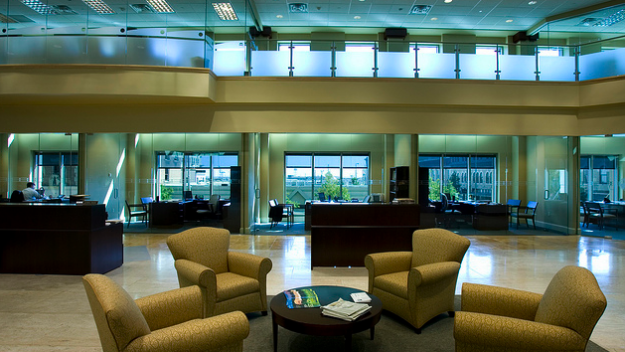Question: Can daylighting actually help reduce my energy consumption? How does this work?
Answer: Yes! Daylighting, the strategically controlled admission of natural light into a building, can definitely help reduce energy consumption and result in sweet savings.
Soaking the sun: how daylighting works
Daylighting is an energy efficient system that involves thoughtful placements of windows, openings, skylights and reflective surfaces so that natural light can be used inside instead of artificial lighting and heating.
There are actually responsive lighting control systems that can work in tandem with strategically placed windows that will help reduce the consumption of electric indoor lighting.
Known as the most efficient method of lighting for a commercial building, daylighting is ideal for most businesses. In cases where large side windows aren’t possible, many building designs opt for the skylight for toplighting — allowing natural light to enter from above. Another alternative is the tubular daylight device — though it’s smaller than a skylight, it can still deliver enough light and reduce the use of electric lighting.
Of course, with light comes natural heat. Another benefit to daylighting is the natural warmth the sun offers. Working with the sun can actually lower heating and cooling costs.
How this can benefit your energy bill
With heating and cooling costs weighing heavily on an energy bill, all the help adds up. While the benefits of natural heating is obvious, a lot of daylighting design structures are actually built to help control cooling as well.
Some active skylights have a mirror system that can find sunlight and redirect it into a sort of skylight well — helping to control the daylighting and heat — especially in summer months. Blinds, curtains and window screens are also helpful when it comes to the amount of daylighting you want to allow inside.
The Whole Building Design Guide promotes daylighting not only for the energy savings, but for the psychological, aesthetic and health benefits. They say:
“Additionally, electric lighting accounts for 35% to 50% of the total electrical energy consumption in commercial buildings. By generating waste heat, lighting also adds to the loads imposed on a building’s mechanical cooling equipment. The energy savings from reduced electric lighting through the use of daylighting strategies can directly reduce building cooling energy usage by an additional 10% to 20%. Consequently, for many institutional and commercial buildings, total energy costs can be reduced by as much as one-third through the optimal integration of daylighting strategies.”
It’s clear that daylighting is energy efficient and can definitely reduce the costs of your energy bill.
Some things to consider
With all good, comes some trade-offs. While windows allow natural light, are pretty to be by and offer the heat of the sun — they are also essentially a hole in the wall that may make homes for leaks.Also, the science of daylighting is so strategic — that if it’s not properly thought out, sometimes the amount of light or heat may be out of balance — or just flat out not what you want. Of course, when planned carefully — this problem is also avoidable.
While daylighting is great help to light a building — it should never be relied on as the sole source of illumination. It can be used as a primary source — but it won’t be much use at nighttime or when there’s overcast. A supplemental light source will always be necessary.
And last but not least, the thermostat should be kept out of sunlight so it can do its job to the best of its ability.
Image credit: Hunter Douglas Contract



















